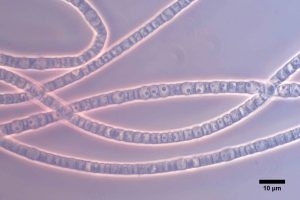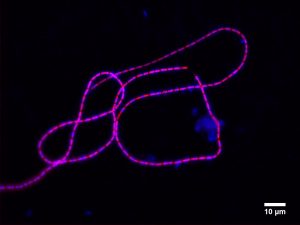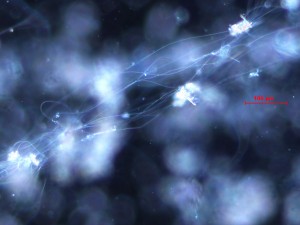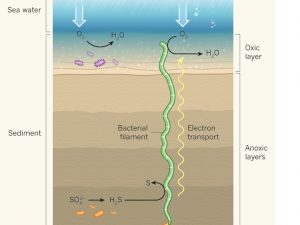Biological electron transport goes far
Microscopy reveals that cable bacteria form long filaments, which consist of unbranched chains of cells that extend up to 30-70 mm in length and include over 10.000 cells (Figure 1). Under natural conditions, these long bacterial filaments are vertically oriented in the surface layer of marine sediments, where they form dense filament networks. Underneath one square meter of seafloor, one can find a network of up to 10.000 km of filaments of cable bacteria. Together, these networks of cable bacteria produce sizeable currents: about 25 square meter of seafloor produces the equivalent electrical power needed for the charging of one iPad.
The fact that microbes produce electrical currents is not truly surprising. Electron transfer is fundamental to life, and as a consequence, biological systems have evolved the capacity to generate electrical currents across a range of spatial scales . In photosynthesis and cellular respiration, electrons are channelled over nanometer distances. Similarly, metal-reducing bacteria are known to develop conductive appendages, known as “nanowires”, which are capable of transporting electrons to solid electron acceptors outside the cell over distances up to 10 micrometers. Therefore, the real surprise is the length scale over which electrons can be transported. Long-distance electron transport inside cable bacteria operates on the scale of centimetres. This extends the known length scale of biological electron transport by many orders of magnitude.

Figure 1. Bright-field microscopy image of a bundle of cable bacteria filaments extracted from marine sediment. Each filament consists of an unbranched chain of cells that can extend up centimeters in length and include over 10.000 cells. (Silvia Hildalgo Martinez – University of Antwerp)




